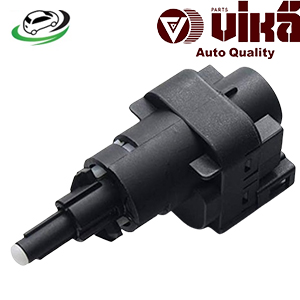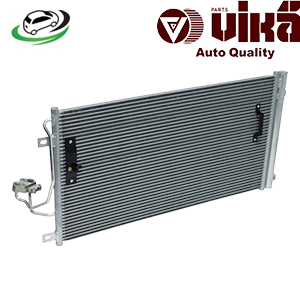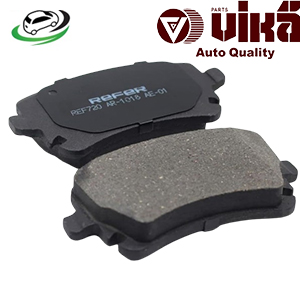-23%
Get VW Transporter T6 / Caravelle T6 Bus/ Multivan T6 (SGF SGM SGN SHM SHN)/ California T6 Camper (SGC SGG SHC) Rear Brake Pad Set 7H0698451A
The rear brake pad set is a crucial component of a vehicle’s braking system, contributing to the safety and performance of the vehicle. Understanding the importance of rear brake pads, their types, installation processes, and maintenance practices is essential for vehicle owners. This comprehensive guide will delve into these aspects, helping you appreciate the significance of rear brake pads and how to ensure they function effectively.
Importance of Rear Brake Pads
1. Safety
The primary function of brake pads is to create friction against the brake rotors, which slows down or stops the vehicle. Rear brake pads play a significant role in overall braking performance. Effective rear braking helps maintain vehicle stability, especially during sudden stops or emergency situations.
2. Balanced Braking
In modern vehicles, braking is a balanced process involving both front and rear brake pads. The front brakes typically handle a larger percentage of the braking force, but the rear pads are equally important for preventing nose-diving (the tendency of a vehicle to dip forward during braking). Well-functioning rear brake pads help distribute braking forces evenly, ensuring stability and control.
3. Preventing Brake Fade
Brake fade occurs when brake pads overheat, reducing their effectiveness. High-quality rear brake pads can withstand higher temperatures, minimizing the risk of brake fade and ensuring consistent braking performance even under heavy use.
4. Vehicle Control
The rear brake pads assist in maintaining control during various driving conditions, such as cornering and wet roads. Effective rear braking helps prevent skidding and loss of traction, enhancing overall safety.
Types of Rear Brake Pads
Understanding the different types of rear brake pads available can help you choose the right ones for your vehicle. The main types include:
1. Organic Brake Pads
Organic brake pads are made from materials like rubber, resin, and other organic compounds. They are generally softer than other types of pads, which can lead to quieter operation and less dust production.
- Advantages:
- Quieter operation
- Less brake dust
- Lower cost
- Disadvantages:
- Shorter lifespan
- Prone to fading under high heat
- Not suitable for heavy-duty applications
2. Semi-Metallic Brake Pads
Semi-metallic brake pads contain a mix of metal fibers (like copper, steel, or iron) along with organic materials. This composition provides enhanced braking performance and durability.
- Advantages:
- Excellent stopping power
- Better heat dissipation
- Longer lifespan than organic pads
- Disadvantages:
- Noisier operation
- More brake dust production
- Can wear down rotors faster
3. Ceramic Brake Pads
Ceramic brake pads are made from a dense ceramic material combined with other components. They are popular for their durability and quiet operation.
- Advantages:
- Long lifespan
- Quiet operation
- Minimal brake dust
- Disadvantages:
- Higher cost
- Can be less effective in extreme temperatures
4. Low-Metallic NAO Brake Pads
Low-metallic non-asbestos organic (NAO) brake pads contain a small amount of metal and are designed to provide good performance while being less harsh on the rotors.
- Advantages:
- Good stopping power
- Reduced noise
- Better heat dissipation than organic pads
- Disadvantages:
- More brake dust
- Shorter lifespan than ceramic and semi-metallic pads
Installation of Rear Brake Pads
Installing rear brake pads is a task that can be done with basic tools and some mechanical knowledge. Here’s a step-by-step guide to help you through the process:
Tools and Materials Needed:
- New rear brake pad set
- Brake grease
- Jack and jack stands
- Lug wrench
- C-clamp or brake pad spreader tool
- Socket set
- Brake cleaner
- Safety goggles and gloves
Installation Steps:
- Safety First: Ensure the vehicle is parked on a flat surface, engage the parking brake, and wear safety goggles and gloves for protection.
- Loosen the Wheel Nuts: Using a lug wrench, slightly loosen the wheel nuts on the rear wheels before lifting the vehicle.
- Lift the Vehicle: Use a jack to lift the rear of the vehicle and secure it with jack stands to ensure stability while you work.
- Remove the Wheel: Completely remove the loosened wheel nuts and take off the rear wheel to access the brake assembly.
- Locate the Brake Caliper: Identify the brake caliper, which houses the brake pads. It is typically mounted over the brake rotor.
- Remove the Caliper: Using the appropriate socket, remove the bolts securing the brake caliper. Carefully slide the caliper off the rotor, taking care not to stress the brake line.
- Remove Old Brake Pads: Once the caliper is removed, take out the old brake pads from their mounting points. Note the orientation of the pads, as you’ll need to install the new ones similarly.
- Compress the Caliper Piston: Use a C-clamp or brake pad spreader tool to compress the caliper piston back into its housing. This step is crucial as it creates enough space for the new, thicker pads.
- Install New Brake Pads: Apply a thin layer of brake grease to the backing of the new brake pads (avoid getting grease on the friction material). Install the new pads into the caliper bracket in the same orientation as the old ones.
- Reattach the Caliper: Carefully slide the caliper back over the new brake pads and rotor. Align the caliper with the mounting holes and secure it with the caliper bolts. Ensure they are tightened to the manufacturer’s specifications.
- Reinstall the Wheel: Place the wheel back onto the hub and hand-tighten the lug nuts. Lower the vehicle and then fully tighten the nuts in a star pattern to ensure even pressure.
- Repeat on the Other Side: Repeat the entire process on the other rear wheel to ensure even braking performance.
- Test the Brakes: Before driving, pump the brake pedal a few times to ensure that the brake pads are seated correctly against the rotor. Check for any unusual noises or movement.
- Dispose of Old Pads: Properly dispose of the old brake pads according to local regulations.
Maintenance of Rear Brake Pads
Proper maintenance of rear brake pads is essential for their longevity and performance. Here are some maintenance tips:
1. Regular Inspections:
Periodically check the thickness of the brake pads. If they appear worn down to 1/4 inch or less, it’s time for replacement.
2. Listen for Noises:
Pay attention to any unusual noises, such as squeaking or grinding, which could indicate that the brake pads are worn out or damaged.
3. Monitor Brake Performance:
If you notice a decrease in braking performance or if the vehicle pulls to one side during braking, have the brake system inspected.
4. Clean Brake Components:
Occasionally, clean the brake components, including the rotors and calipers, using brake cleaner. This helps remove dust and debris that can affect performance.
5. Ensure Proper Alignment:
Misalignment of the wheels can cause uneven wear on the brake pads. Regular wheel alignment checks can help maintain even brake pad wear.
6. Use Quality Components:
When replacing brake pads, always opt for high-quality parts from reputable manufacturers to ensure safety and performance.
Signs of Worn or Faulty Rear Brake Pads
Recognizing the signs of worn or faulty rear brake pads is crucial for timely intervention. Common symptoms include:
- Squeaking or Squealing Noises: If you hear high-pitched noises when braking, it could indicate that the brake pads are worn and need replacement.
- Grinding Sounds: A grinding noise often means that the brake pads have worn down completely, and metal is making contact with the rotor. This situation can damage the rotor and requires immediate attention.
- Vibration or Pulsation: If you feel vibrations or pulsations in the brake pedal when applying the brakes, it may indicate warped rotors or unevenly worn brake pads.
- Pulling to One Side: If the vehicle pulls to one side when braking, it could be a sign of uneven wear on the brake pads or issues with the braking system.
- Warning Light: Some modern vehicles have a dashboard warning light that indicates a problem with the braking system. If this light illuminates, have your brakes checked promptly.
Conclusion
The rear brake pad set is a vital component of a vehicle’s braking system, directly impacting safety, performance, and control. Understanding their importance, types, installation procedures, and maintenance practices can help vehicle owners ensure optimal braking performance and longevity. Regular inspections, timely replacements, and attentive care will contribute to a safer driving experience, enhancing the overall functionality of your vehicle’s braking system. By prioritizing the maintenance of rear brake pads, drivers can play an essential role in preventing accidents and ensuring their vehicles operate efficiently.
Follow us on Facebook for more parts.




Reviews
Clear filtersThere are no reviews yet.